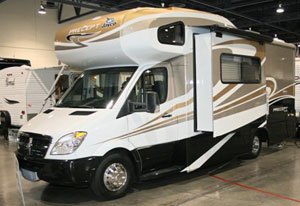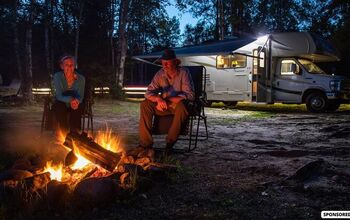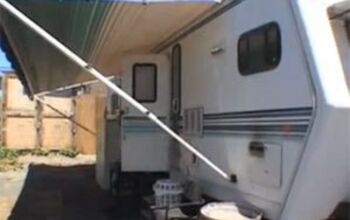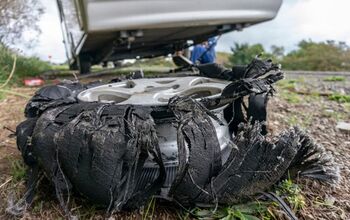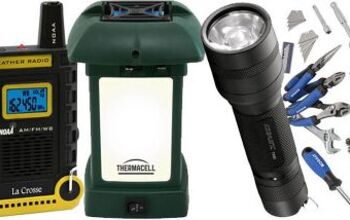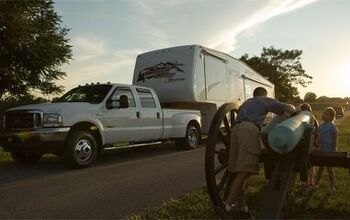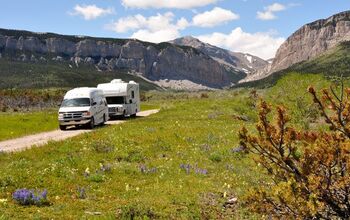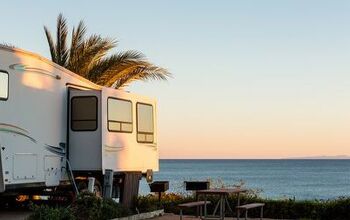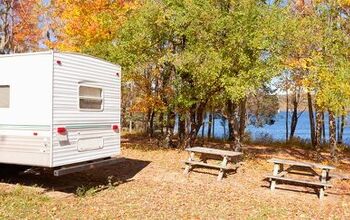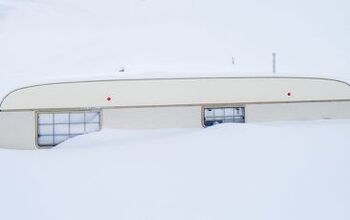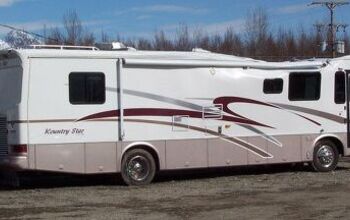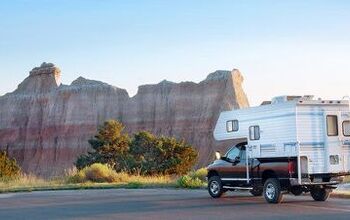2010 Jayco Precept Review
Jayco has nicknamed the 2010 Precept 24SDS the “Escape Artist.” Since it’s based on the popular and fairly economical Dodge Sprinter chassis, Escape Artist is a solid and succinct sobriquet for this high-mileage hustler. Said to deliver 16 to 18 mpg, the Precept appears to have the ability to equal those figures.
You’ll have to be patient with the Precept on any hill climbing and during acceleration, however. While its V6 turbodiesel engine produces 154-hp @ 3,400 rpm and 280 lb.-ft @ 1,200-2,400 rpm, and is coupled to a five-speed automatic transmission with a single overdrive gear; the Mercedes-Benz engine only displaces three liters. With a 25-gallon fuel tank and using an estimated 15 mpg, this escape artist could conceivably provide 375 miles per tank, so most drivers could comfortably fill the tank once a day in the morning, drive about six hours, find a campsite, and do the same thing the next day.
Based on my previous experience, the Precept should prove to be nimble, easy to handle, and able to park in any mall’s parking lot, easing greatly the chore of trip preparation. It’s only 24 feet, 8 inches long on a 170-inch wheelbase with a very respectable turning radius, so it’ll probably fit in almost any driveway, again easing trip prep.
Once it’s all packed, fueled, and watered, simply back it out of your driveway (using its standard backup camera and monitor and remote-controlled sideview mirrors for safety) and be on your way. If you wish to haul a towable along, you’ll be restricted to quite small cars for a couple of reasons. With a towable it’ll take much longer to achieve freeway speeds and the Precept only offers a 3,500-pound rated hitch (you’ll have to leave the SUV at home, even a Jeep Wrangler weighs more than 4,000 pounds).
Unlike other shifter-select panels, Precept’s panel has no lower gears shown. Instead, “D” was the final selection on the bottom (starting with “P” at the top, then “R”, “N” and “D”, respectively. I finally noticed that on the left side of the shifter was a “-” (or minus) sign and on right side was a “+” (or plus) sign. Tapping the shifter to the left drops the transmission to a lower gear (one tap per gear); tapping it to the right raises the transmission a gear. I caution an owner to be sure to read the owner’s manual thoroughly before operating the coach. The multi-readouts on the dash must be scrolled through to see the entire list, and it’s an extensive one—reading the manual will greatly assist an owner in learning all about the list.
In keeping with other coaches constructed upon the Sprinter chassis, I’d say the cab is very utilitarian. However, after unlocking the doors with the standard remote key fob and slipping into the delivery truck-type cab with rubber mats on the floorboards and leather non-swiveling captains’ chairs, one can adjust the remote-controlled side-view mirrors, relock the doors, and put down the power windows before starting the engine. While you’re warming the engine, glance over a shoulder and you’ll see immediately how easy the coach cleanup will be with linoleum “tiles” throughout.
While you’re driving you’ll enjoy the Precept’s cruise control, its tilt and telescoping power steering, anti-lock brakes, and electronic skid control. The 180-amp alternator should be capable of keeping all three batteries (one chassis and two house) charged and ready for use. The two house batteries are also wired through a dash-mounted auxiliary starting switch in case a bit more boost is needed to turn over the Mercedes-Benz V6 on a cold morning.
If you’re going to travel with kids, you will have to ration the space and weight of their gear and toys due to the limited GVWR of 11,030 pounds. I have no idea what the wet weight of the Precept might be, so I can’t estimate its payload, but since four people can be strapped into the Precept safely you’ll have to carefully watch what you load into it. Its fuel tank holds 200 pounds of diesel fuel. Its water tank holds 37 gallons (which includes the water heater’s capacity) or approximately 300 pounds, and the LPG tank contains another 85 pounds (approximately). That totals up to nearly 600 pounds over the Precept’s dry weight, so you’ll want to take care not to overload its chassis with clothes and food.
This brings us to the interior; which as I said earlier should be an easy, breezy clean up with linoleum on all of the floor surfaces. There is one permanent bed in the rear—albeit with a slightly cut-off bottom corner—and one temporary bed that can be made up from the dinette (or a fold-out sofa-bed can be chosen in place of the dinette). In the cab-over portion, you’ll find another bed or optional storage can be chosen. The dinette table is on a spring-assisted lift (called Dream Dinette) so you just push it down once it is released from its wall lock, and then allow it to rise when the cushions are removed.
The dinette is in a driver’s side slideout and adds a great deal to the feel of an inside seeming to be larger than the outside. European-style curvy cabinets and brushed-metal nickel handles and fixtures give a combination of retro and modern feel to the Precept.
The galley’s overhead cabinet appears to be a comfortable and convenient height for easy working on the galley’s countertop. To the right of the sink is a three-burner stovetop with an Apollo convection-microwave oven beneath and an exhaust-fan equipped range hood above. A 6-cubic-foot two-way, two-door refrigerator sits across the aisle, adjacent to the dinette.
The ceiling and cabinet bases held plenty of lights and they’re nicely placed for maximum usability. A 22-inch LCD television is mounted between the entrance door and upper bunk. The TV is on a swinging wall mount so it’s viewable from the dinette or cabover bunk. Which reminds me, there are two seat belts in the dinette, so I assume the TV can be watched while traveling, either via the genset or the 400-watt inverter.
The Precept’s bathroom is adequate but tight with just a shower and toilet behind the door, with a small sink just outside the door. There’s a towel rack next to the sink and a narrow cabinet above and below the sink.
You’ll find quite a lot of space in the external basement storage bins with side-opening doors. But you’ll have to remember the coach’s weight restrictions. There are three bins on each side, one of which holds the 3.2-kw diesel-powered generator and one holds the LPG tank.
This particular coach, which I inspected at an RV show in Las Vegas, was equipped with an odd outside access door next to the rear streetside bed. From the outside it looked like a standard storage bin door, but from the inside it had the appearance of an inside cabinet door. I didn’t get a chance to ask anyone what it was for, but I’m guessing beverages could be served to folks sitting in the shade of the optional awning.

